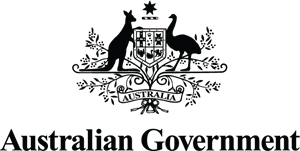For Industry
Light emitting diode lamps, 2025 determination

The Greenhouse and Energy Minimum Standards (LED Lamps) Determination 2025 commences on 3 March 2026.
The LED lamp registration form is now available in the Energy Rating Product Registration system. Start applying now, and make sure you have the relevant information and documentation to apply. You can register a new account to get started if you don’t already have one in the Energy Rating Product Registration system. Do not wait until 3 March 2026 to apply. Prepare and apply now!
The registration form for LED lamps is now available. Register a single model or a standard family of up to 100 like models. We’re currently working on extra functionality to support special purpose family registrations of up to 10 unlike models - coming soon!
If you haven’t registered with GEMS before, you will need to set-up a User Account before you can get started.
Need support? Use the Help Section of the registration system that has a range of helpful how-to videos and guides, including how to create a new user account, how to submit an application and more.
Overview
As light emitting diode (LED) lamps are standardised across the market it is important for these lamps to be regulated to support consumers save energy and money.
At a glance
To understand legislative requirements, registrants are encouraged to review the new determination and its Explanatory Statement. They can be accessed from the Federal Registration of Legislation.
| Determination | Minimum Energy Performance Standards | Energy Rating Label |
|---|---|---|
| Greenhouse and Energy Minimum Standards (LED Lamps) Determination 2025 | Yes | No, however labelling requirements do apply. |
Legislation
In Australia, this product is regulated under the Greenhouse and Energy Minimum Standards Act 2012 (Act).
In New Zealand, the relevant legislation is the Energy Efficiency (Energy Using Products) Regulations 2002. Visit Products under E3 on Energy Efficiency and Conservation Authority for a list of regulated products.
What products are covered?
Products covered under this determination include electric lamps based on LED technology with the following characteristics.
For general conditions:
- must fall within specified chromaticity coordinates (subsection 10(4)(a))
- initial luminous flux of less than 500 lumen per mm2 of projected light-emitting surface area
- initial luminous flux between 100 – 82,000 lumens, and contain one or more inorganic LEDs
- including LED lamps placed on the market in a containing product.
For single capped lamps with LED light sources of all shapes with a single cap of one of the:
- BA15d, B15d, B22d, E11, E12, E13, E14, E17, E26, E27, E39, E40, GU10, GZ10, GX10, GU24, GX53, G9
- Bi-pin caps G4, GY4, GU4, GZ4, GU5.3, GX5.3, G6.35, GY6.35, GU7, G53.
For double capped LED lamps with a nominal length of 550 mm to 1500 mm including:
- retrofit lamps and conversion lamps with G5 and G13 caps intended for replacing fluorescent lamps with the same caps
- lamps with GX16t-5 caps.
Refer to section 10 of the determination for more details.
What products are not covered?
Products not covered under this determination include:
- aeronautical lamps (aircraft lights or aeronautical ground lights) that satisfy requirements of relevant civil and defence aviation safety regulations
- ultraviolet lamps with specific effective ultraviolet power greater than 2mW/klm or peak radiation between 180 – 280 nm
- lamps where the radiation power emitted within the range of 400 – 480 nm is 40% or more of the total radiation power emitted within the range of 250 – 800 nm (designed for coral zooxanthellae symbioses)
- horticulture lamps that have a photosynthetic photon efficacy of greater than 2.5 μmol/J or for which radiation power emitted within the range of 700 – 800 nm is 25% or more of the total radiation power emitted within the range of 250 – 800 nm
- spot lamps with a fixed beam angle of less than 10 degrees
- colour tuneable lamps, other than LED lamps that contain phosphor materials for light conversion, that:
- can be set to at least the colours listed in Schedule 1 subsection 2(2) of the determination and
- have, for each of those colours, measured at the dominant wavelength, the minimum excitation purity set in that table.
Refer to section 11 and Schedule 1 of the determination for more details.
Technical requirements
Review the determination and standards for testing and minimum energy performance standards (MEPS) requirements.
The version of the standards that apply are the versions that existed when the Determination was registered on 3 March 2025.
Standards
-
Standards Australia Limited
- AS/NZS 5341 means Australian/New Zealand Standard 5341:2021 – LED lamps – Test methods – Energy and functional performance
- AS/NZS 62471 means Australian/New Zealand Standard 62471:2011 – Photobiological safety of lamps and lamp systems
-
Commission Regulation
- Commission Regulation (EU) 2019/2020 of 1 October 2019, which sets out Ecodesign requirements for light sources and separate control gears – applicable to testing and minimum requirements
-
International Electrotechnical Commission Standard
- IEC 62776 means International Electrotechnical Commission Standard IEC 62776:2014 Double-capped LED lamps designed to retrofit linear fluorescent lamps – Safety specifications
- IEC 62931 means International Electrotechnical Commission Standard IEC 62931:2017 GX16t-5 capped tubular LED lamp – Safety specifications
- IEC TR 61547-1 means International Electrotechnical Commission Standard IEC TR 61547-1:2020 – Equipment for general lighting purposes – EMC immunity requirements – Part 1: An objective light flickermeter and voltage fluctuation immunity test method.
- IEC TR 62778 means International Electrotechnical Commission Technical Report62778:2014 Application of IEC 62471 for the assessment of blue light hazard to light sources and luminaires
- IEC TR 63158 means International Electrotechnical Commission Technical Report 63158:2018 Equipment for general lighting purposes – Objective test method for stroboscopic effects of lighting equipment
- IEV-845 means IEC 60050-845:2020 Ed.2, International Electrotechnical Vocabulary (IEV) – Part 845: Lighting
-
Commission Internationale de L'Eclairage (CIE)
- CIE S 025 means CIE S 025/E:2015 – Test Method for LED Lamps, LED Luminaires and LED Modules
- ILV means the International Lighting Vocabulary (ILV), Second Edition
-
Commonwealth (Australia)
Commonwealth regulations and instruments made under them, which are copyright Commonwealth of Australia:
- Civil Aviation Safety Regulations means the Civil Aviation Safety Regulations 1998
- Defence Aviation Safety Authority Regulation (DASR) 139 – Aerodromes means the Defence Aviation Safety Regulation (DASR) 139 – Aerodromes, published by the Australian Government Defence Aviation Safety Authority (DASA)
- Defence Aviation Safety Design Requirements Manual means the Defence Aviation Safety Design Requirements Manual, published by the Australian Government Defence Aviation Safety Authority (DASA)
Minimum Standards
The minimum luminous efficacy for this product is established under section 12 and 13 of the determination.
Testing your product
Your product class must be tested in accordance with the determination and standards. The testing requirements depend on the class and characteristics of the model, and are established in Part 6 section 21 to 26 of the determination. Testing must be done in accordance with one of the following options:
- AS/NZS 5341:2021 – LED lamps – Test methods – Energy and functional performance
- for AS/NZS 5341 testing can be carried out in accordance with an alternative standard as an acceptable equivalent test method—that alternative standard
- a standard that imposes substantially identical testing requirements to AS/NZS 5341. This would require the GEMS Regulator to accept the testing and make a legislative instrument under the Act, declaring the alternative testing requirements or methods to be compliant for the purposes of the Act. See Product deemed compliance for more information.
Note that the determination includes performance requirements for lumen maintenance and survival factors (S19, table rows 3 and 4). The combined luminous flux maintenance and endurance test specified in S6.2 of AS/NZS 5341:2021 involves a 3,600-hour supply switching test which should be factored in to planning for product registration. The test does not need to be repeated if it has already been carried out for European Union registration of the model under EU 2019/2020.
Once tested you will receive the model’s energy efficiency and other performance information in a ‘test report’. The test report will assist you to determine if your model meets the MEPS.
You can test models in any Australian or international photometric laboratory, including an in-house laboratory maintained by the manufacturer or an accredited third-party laboratory.
Labelling (packaging) requirements
There is information that must be visibly displayed on the packaing at the point of sale. These requirements are outlined under section 14 to 16 of the determination.
Information that must be displayed on the packaging includes:
- model identifier. This must be the same model identifier as submitted in your registration form
- bar code number (if any)
- rated useful luminous flux
- if non-directional incandescent or halogen lamp equivalence is claimed, the rated incandescent or halogen power equivalence
- rated luminous efficacy
- rated correlated colour temperature rounded to nearest 100 K, or the range that can be set
- for directional lamps, rated beam angle or the range that can be set
- cap type
- rated L70B50 lifetime
- rated on-mode power
- rated standby power (if not zero)
- rated networked standby power (if not zero)
- rated colour rendering index (CRI) and additional markings if CRI is less than 80
- dimmability and dimming compatibility.
Information that must be displayed on the lamp itself:
- if there is room for only one value, the rated useful luminous flux
- if there is room for more than one value, the correlated colour temperature
- if the product is a directional lamp, the rated beam angle.
Other requirements
Other requirements that must be met include:
- performance requirements under section 19 of the determination. This includes colour rendering, displacement factor, lumen maintenance factor, survival factor and the colour consistency
- impact on human health under section 20 of the determination. This includes flicker, stroboscopic effect, ultra violet and blue light hazard.

Access to standards and other materials
Standards available for purchase:
- AS/NZS test and performance standards are available from Standards Australia Store
- IEC standards are available from the International Electrotechnical Commission at theWebstore
- CIE standards are available from the Commission Internationale de L'Eclairage at theOnline Store
Other materials available for free:
- Civil Aviation Safety Regulations 1998
- Defence Aviation Safety Authority instruments
- Commission Regulation (EU) 2019/2020 of 1 October 2019. The full title is Commission Regulation (EU) 2019/2020 of 1 October 2019 laying down ecodesign requirements for light sources and separate control gears pursuant to Directive 2009/125/EC of the European Parliament and of the Council and repealing Commission Regulations (EC) No 244/2009, (EC) No 245/2009 and (EU) No 1194/2012 (Text with EEA relevance.) and can be accessed directly here.
Other regulated lighting
See Double-capped fluorescent lamps, Incandescent lamps or Self-ballasted compact fluorescent lamps product pages.

